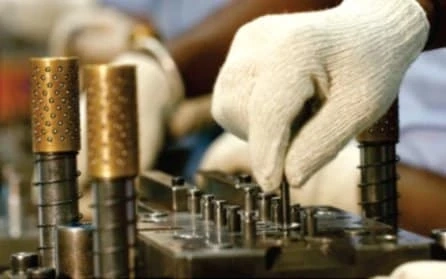Dies are undoubtedly an important element to consider in the manufacturing industry. Especially, when you are looking to breathe life into a material of desired shape and size.
At the very outset, a consumer might not be able to relate to the importance of a die as a tool, but for a manufacturer, choosing the best die-making supplies is half the battle won. This is chiefly because the equipment that plays a role in the die-making process has made it possible for multiple industries to expand their production lines.
One must understand that the machines facilitating die-cutting aim at nothing but precision, which, in turn, makes it possible for the end product to come out flawless.
If you are new to the die-cutting and manufacturing industry, choosing the right kind of die-making supplies is of paramount concern.
Here are some of the key pointers to make life easy:
• Picking the wrong materials can wreak havoc with your product design and thereby render the end product unusable.
• Using materials of low tensile strength for cutting, like rubber sheets and fiberboards.
• Not using your die-making supplies to their fullest capacity.
This post takes a dig at seven such important equipment that makes the die-making process a bliss. From cutting plates to grinding wheels, we have got it all covered!
Countamats
Topping our list of important equipment for die-making is the countamat, which is nothing, but a durable counter that aids in clean die-cutting.
Besides, countamats also pack great antistatic features that work towards safeguarding the finished product. A typical countamat carries stable edges that help achieve precise and super-fine creases.
Cutting Plates
The very first step in a die-making process is designed, which, if done wrong, can upset the entire process and add to the expense. This is where cutting plates come in, as they mitigate the chances of an inaccurate or thoroughly wrong design.
Grinding Wheels
Now, grinding is an important step in the die-making process as it works towards enhancing die surfaces. Here, grinding wheels, which use microscopic abrasives, do the hard work by removing any unwanted bulges along the way, thereby rendering the surface smooth.
Tapes
Tapes are an indispensable component of the die-making process. And there\'s more than just one kind to talk about.
Let\'s start with the basic ones, which are otherwise known as patch tapes.
As the name suggests, this particular kind of tape is used for patching needs; somewhere toward the lower end of the die board. A patch tape finds its most extensive use on wooden die boards and is preferred by all as it does not require any moistening. Besides, it\'s self-adhesive, so much so that it holds the wood in a desired position for the cutting process to begin.
Next come the Shim tapes, which are again of two types, namely Accu Shim and Fit Shim. The former is a great piece among all die-making supplies when working with stainless steel metals, while the latter is mostly used for creasing machines where you deal with varying pressure.
Lastly, there\'s the double-sided tape which of course requires no introduction. We have all used double-sided tape at some point in time around our house for different needs. In die-making too, a double-sided tape makes way for a great piece of accessory.
Mallets
Similar to tapes, mallets are also of different types. And it has precisely to do with the size of the heads.
First come the Elastomer mallets with hardened polymer heads, followed by the Hammer mallets, which are made out of heat-treated hardened steel. They are used to transform a smooth surface into a rough one. The last one is the Rawhide mallet, which basically has to do with precise and scratch-free striking.
Stripping Pins
Another essential among all die-making supplies is stripping pins, which are used to do away with the waste that accumulates during the die-making process.
It is because of the stripping pins that a die-making process can go on without having to make occasional stops in between to get rid of the waste. Essentially, stripping pins forms an integral part of the scrap management process, which also helps a die retain its desired form.
Clamps
Clamps require no introduction, as they are already used extensively across multiple industries. In the die-making process, a clamp acts more like a safety feature; a tool of utmost necessity that works towards holding the raw material without any movement.
Wrap Up
The die-casting industry worldwide is expected to reach a value of no less than USD 86.3 billion by the end of 2027.
Undeniably, it all boils down to accurate end products that owe it all to a precise die, which in turn owes it to the right pack of die-making supplies.
The above list of die-making supplies can be a great piece of information for anyone who is looking to venture into die-cutting. All they need to do as a new manufacturer is lay their hands on the right kind of die-making supplies to earn goodwill through neatly designed end products.
In turn, it will help a brand become a reliable and trustworthy name for one and all.



